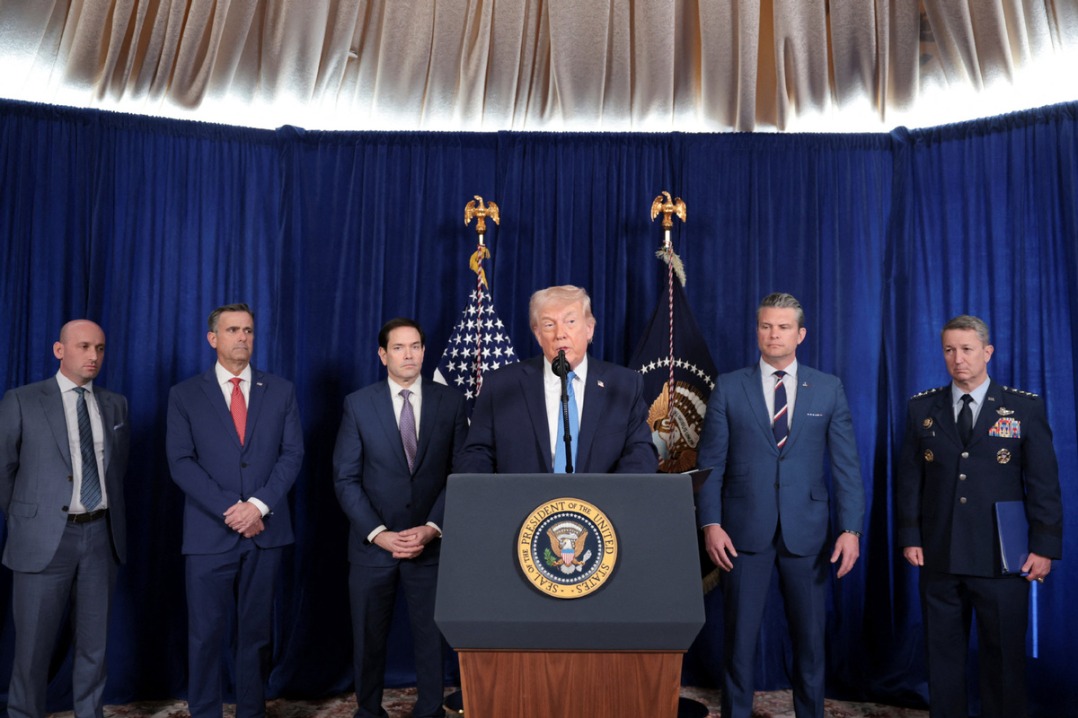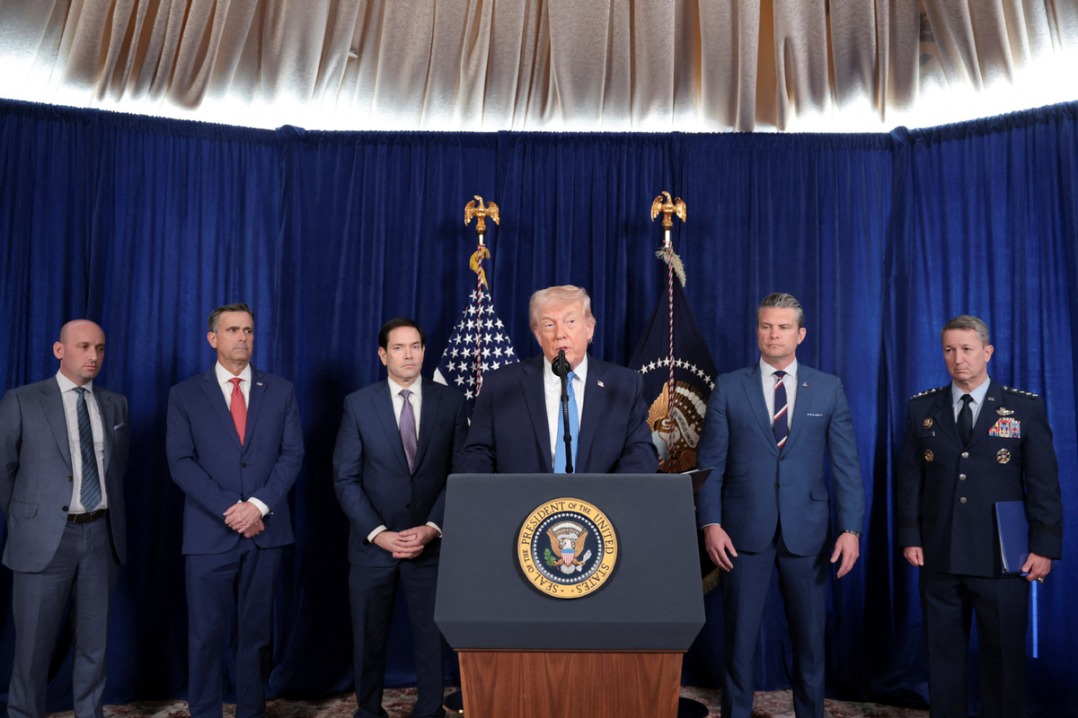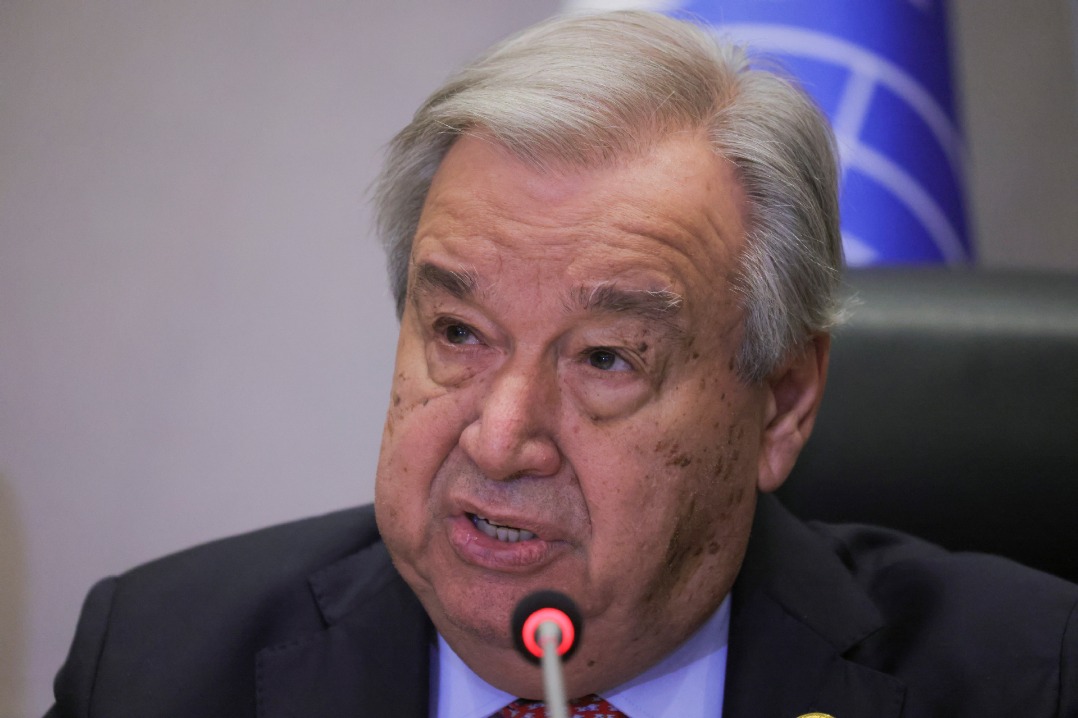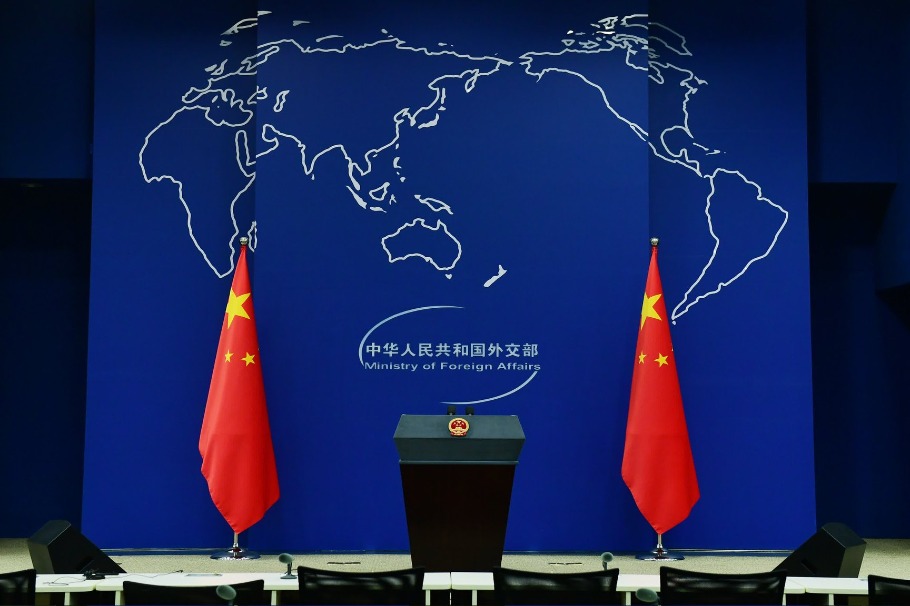Australian museum director boosts understanding between people
Xinhua | Updated: 2022-09-26 08:28
Mathew Trinca, director of the National Museum of Australia, says his interest in Chinese art started with calligraphy.
"The first time I saw a Chinese artwork was when I was quite young," he recalls. "I was struck by Chinese calligraphy. I was fascinated by how it has literary meaning, but is also art."
He saw that the painted characters showed the emotions of the calligrapher, and believed it reflected the "philosophical nature of the Chinese people".
That was the beginning of Trinca's understanding of Chinese culture. Later, his role as director of the NMA gave him a chance to learn more.
The NMA had its permanent home by Lake Burley Griffin in the center of the Australian capital Canberra in 2001. Trinca joined the NMA as a senior curator in 2003.
He was appointed to the post of director in 2014. After that, he had opportunities to visit China on numerous occasions.
"Each time I'm there, I feel another part of the picture becomes a little clearer to me about Chinese art and culture," he says, adding that, at some level, he gradually understood the ink painting traditions in China, and how to use certain animals or plants in the ink paintings.
Noting that he considers himself as still "very much a beginner", Trinca says, "Those things have really been one of the great fortunes that I have experienced by going to China".
Trinca says the NMA has a strong connection with China. Since the national museum opened its doors in 2001, it has brought several major exhibitions to China. "To Guangzhou with our first exhibition ever overseas in 2002, again in 2010 at the National Art Museum of China."
The NMA signed a memorandum of understanding with the National Museum of China in 2016, where a 150-piece Old Masters art exhibition with Australian indigenous artists was launched in 2018.
Last year, another major exhibition, Red Heart of Australia, was hosted in the NAMOC. In exchange, three modern sculptures by Chinese masters Liu Kaiqu, Xiong Bingming and Wu Weishan were put on display at the NMA. Last year, both institutions signed a new memorandum of understanding to renew the cultural partnership.
"There is no doubt that our relationship with China and the Chinese people is one of the most important for the Australian people, indeed for the Australian nation," says Trinca. "So it's no surprise to me that the first place we went to with an exhibition overseas was China, and I think it signified something deep and enduring about our relationship."
His most recent trip to China was before the COVID-19 pandemic in 2019.
During his trips, he could see a deepening of understanding between the people of the two countries.
"When we went with Australia's bark painting artists to Beijing, taking the exhibition Old Masters to the National Museum of China, I was so struck by how Chinese audiences were fascinated by the works, which have a very long lineage here in Australia, but were relatively unknown in China. I could see people making comparisons between their own very old traditions of ink painting, for instance, and these great works by aboriginal artists in Australia," he says.
Australia is home to more than 1.2 million people of Chinese heritage, and the Chinese Australian community has a history dating back to the 19th century. Trinca feels that Australian people are fascinated by Chinese art and culture.
"Indeed, the people-to-people links between our two countries are very strong," he says.
Trinca, personally, has good relations with some Chinese artists, with whom he says he enjoys "meeting and talking about our common interests".
One of his friends is Wu Weishan, director of the NAMOC, whom he recognizes as "a fabulous artist in his own right".
In fact, the exhibition, Sculpting the Soul, featuring the three modern Chinese sculptures, which ran between October and February, was inspired by his discussion with Wu when they met in July 2018. Wu's work, the award-winning bronze sculpture Sleeping Child, was among the exhibits.
Trinca says he is also fond of the paintings of artist Ma Shulin, who had been deputy director of the NAMOC. "Ma and I really enjoyed each other's company," he recalls. "He became a great advocate for these cultural connections between Australia and China, and his ink paintings of operatic figures are really delightful."
At the mention of cultural exchange, the director is philosophical. "I think there's a deep truth in all human life that, when we share our stories with others, we learn about ourselves in the act of sharing," he says.
"When two nations and their peoples come together, and they're prepared to exchange stories, they learn about each other," he says. "They develop relationships in ways that I would otherwise think impossible. That's really what's going to hold us together as two nations whose history has been intertwined, and I think our future is going to be similarly linked."
This year marks the 50th anniversary of diplomatic relations between China and Australia. The NMA is going to put Harvest of Endurance, a work from its collection, on display.
The 50-meter-long pictorial scroll details two centuries of Chinese contact with, and migration to, Australia, which was completed to celebrate Australia's bicentenary in 1988.
Looking into the future, Trinca says he hopes to see the cultural relationship between China and Australia deepen, as well as people-to-people links.
"When one considers the great length of Chinese history, 50 years feels like a drop in the ocean. But it's very important for us to work to really deepen these cultural relationships and to see the exchange of people between our countries. I look forward to that in the future," Trinca says.
- Writers and Sinologists feel Beijing culture in walking tour
- Cultural center celebrates Mid-Autumn Festival in Malta
- Global Chinese lovers show their calligraphy skills (V)
- Global Chinese lovers show their calligraphy skills (IV)
- Foreigners welcome the mid-autumn festival with Chinese paintings and calligraphy work
























